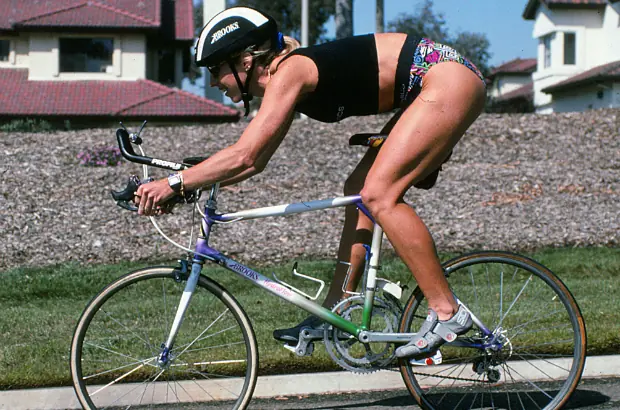
In his fascinating new book "How Bad Do You Want It?", coach Matt Fitzgerald examines more than a dozen pivotal races to discover the surprising ways elite athletes strengthen their mental toughness. Each chapter of "How Bad Do You Want It?" explores the how and why of an elite athlete's transformative moment, revealing powerful new psychobiological principles you can practice to flex your own mental fitness.
In this chapter, Ironman triathlon legend Paula Newby-Fraser has abandoned the training method that carried her to the pinnacle of her sport for a new and trendy approach: pile on the miles. Her ambition may bring her ultimate racing glory--or disaster.
Triathlon Events Near You
A buzzing crowd of sun-toasted spectators pressed against sagging blue safety fencing on either side of Ali'i Drive, challenging the boundary between grandstand and racecourse. The dense gauntlet of sweaty humanity terminated at a makeshift arch spanning the width of the simmering street. At the center of the arch hung a large digital clock, which briefly displayed a nice round figure--9:00:00--before moving on. Nine triathletes had passed under the clock so far, most recently a little-known Japanese pro named Hideya Miyazuka. The seething multitude now waited restlessly to see who would round out the top 10 finishers of the 1988 Ironman World Championship.
The serpentine shape of Ali'i Drive and the tight clustering of shops and restaurants in the village of Kailua-Kona kept approaching athletes out of sight until they were quite close, heightening the anticipatory drama. Presently a runner came around the final bend and into view. He wore a Speedo and matching singlet, his race number (10) identifying him as Pauli Kiuru, a rising star of the sport who hailed from Finland. The crowd erupted in a rapturous ovation, but it wasn't for Kiuru. It was for the runner right behind him, who wore an aqua-and-magenta one-piece racing suit, multiple earrings, and shoulder-length hair gathered in an elastic hair tie.
That runner was Paula Newby-Fraser, and she crossed the finish line at 9:01:01, only 12 seconds behind Kiuru. The 26-year-old Zimbabwean expat had broken the women's course record by a jaw-dropping 34 minutes and 24 seconds and had come within a hair of finishing 10th overall in the world's most competitive triathlon. Among the many elite male racers whom Paula had beaten was future Ironman champion Greg Welch, who finished 5 minutes behind her.
Paula was no upstart. She had placed third in her first Ironman World Championship in 1985. The following year, she won the race. By the start of the 1988 season, Paula was considered one of the top three female triathletes in the world. But nothing she had done previously had prepared the sport for her stunning performance at the 1988 Ironman, where she established herself as one of the best triathletes on earth, period. Her winning time would have made her the outright winner of every Ironman World Championship held through 1983, and the mark would not be surpassed by any other woman for 20 years.


